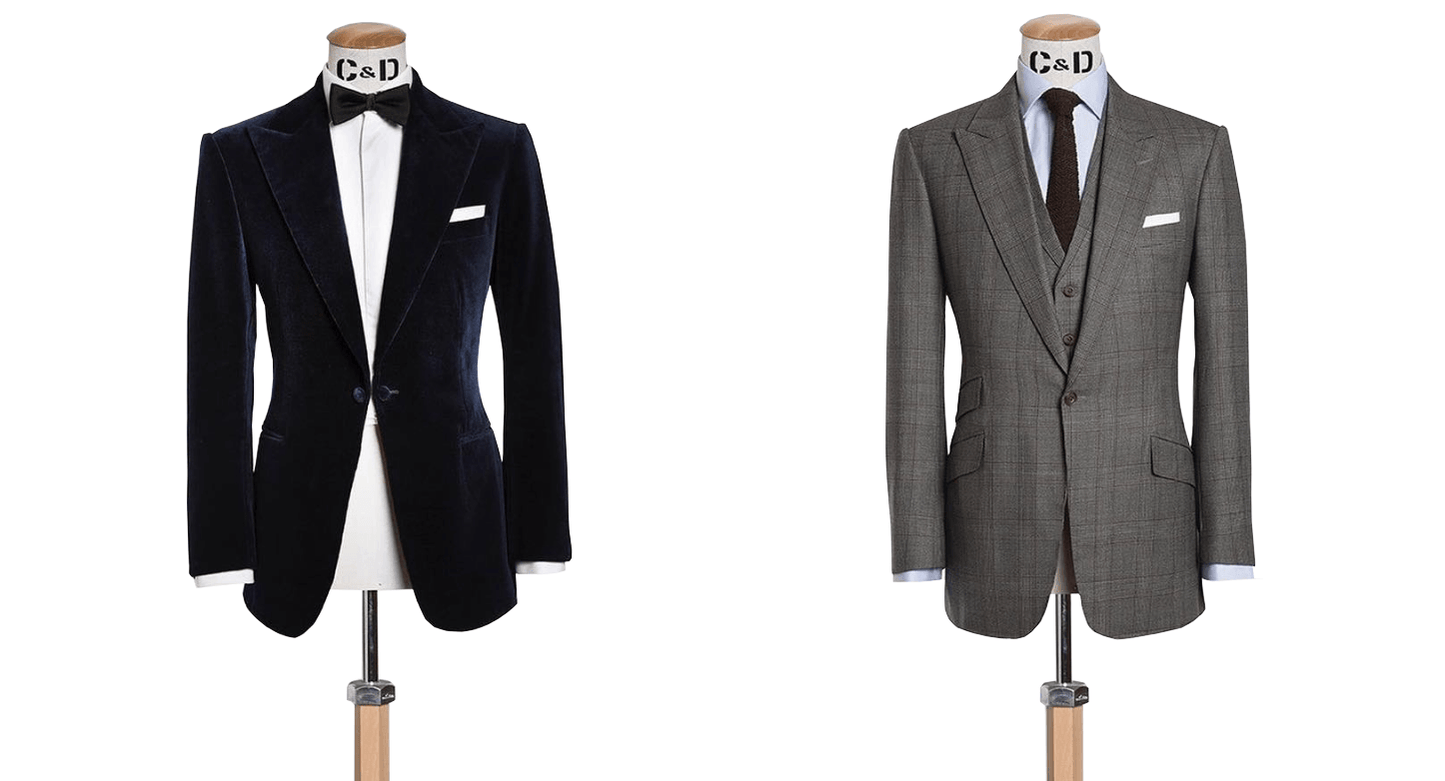
Gathering the building blocks of a contemporary bespoke wardrobe, we’re starting the year with a focus on the classic white pocket square. This is the pocket square for which there are no rules, working with every suit jacket, blazer and tie combination, in any color.
Pocket Square Fabrics
Silk, linen and cotton (below, left to right) are the most common choices for a plain white pocket square, each with distinctive properties, mainly focused on weight and texture.
Known for its luxurious texture and feel, silk is also the perfect material for reflecting light. The luminous qualities of silk will add visual interest to any outfit. Silk pocket squares also have soft edges making them ideal for unstructured pocket square folds. This combined with their light weight means they won’t bulge in your pocket.

Plain white linen is another popular plain white pocket square choice, especially in summer. With stiffer edges than its silk counterpart, a white linen pocket square makes a better choice for more structured pocket square folds while its central suppleness also allows for unstructured fold options. Linen’s distinctive texture will also add contrast when worn with complementary suit, blazer and jacket cloths.
A plain white cotton pocket square leans more toward the handkerchief but is not to be dismissed entirely. Versatile, lightweight and easy to care for, cotton is also the least expensive option of the three. It has less distinctive properties than linen and silk so will not carry a fold in the same way or have the same textural impact to an outfit.
Pocket Square Edges
With a plain white pocket square every detail counts, making hand rolled edges a must for any discerning dresser – the highest standard of pocket square edging available.
Using this method means the raw pocket square edges are rolled over then stitched by hand. They also have mitered corners resulting in a less bulky gathering of material at the pocket square edges. This soft finish makes the pocket square naturally more malleable, giving a better drape, fold and puff.
Machine stitched pocket square edges are more rigid, with corner fabric that will have been folded multiple times. This creates excess bulk all round resulting in an unsightly look which and is less versatile in wear.
Pocket Square Folds
Once you’ve chosen the white pocket square that’s right for you, all that remains is to decide on the all important pocket square fold. There are many options which can be narrowed down initially by matching the fold to the occasion.

For formal events, the flat or presidential fold is the classic pocket square fold. Popular in the 50s and 60s, this is the look you’ll have seen on the likes of Don Draper and James Bond, and is still worn today as much it was then. Every other occasion presents the opportunity to experiment with more flamboyant folds – not to be missed!
There are plenty of pocket square folding websites and videos to be found online but the ubiquitous puff fold is the simplest. Pinch the centre of your pocket square then fold or twist and pop it into your pocket, corners down into the pocket with the puff visible at the top.

In Summation
The plain white pocket square is a classic wardrobe accessory – a staple of the contemporary gent’s sartorial armoury. Clearly, selecting the right material, finishing touches and fold does require some attention to detail but having an informed view, as well some fun with each occasion and ensemble makes it all worthwhile. As we know, the devil is in the detail.
